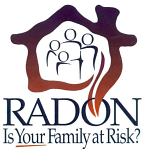Meth Hazard Response
For info call 812-435-5695.
Meth Hazard and Prevention Links:
Evansville’s Mayor’s “No Meth” Task Force
Indiana Department of Environmental Management Drug Lab Cleanup
Indiana State Police Methamphetamine Suppression Section
Vanderburgh County Prosecutor’s Office
Radon Education & Testing Information
Radon is an invisible, odorless and tasteless gas, with no immediate health symptoms, that comes from the breakdown of uranium inside the earth. Naturally existing, low levels of uranium occur widely in Earth’s crust. It can be found in all 50 states. Unless you test for it, there is no way of telling how much is present.
In 2005, the U.S. Surgeon General warned the American public about the risks of breathing indoor radon by issuing a national health advisory. The advisory is meant to urge Am ericans to prevent this silent radioactive gas from seeping into their homes and building up to dangerous levels.
ericans to prevent this silent radioactive gas from seeping into their homes and building up to dangerous levels.
“Indoor radon is the second-leading cause of lung cancer in the United States and breathing it over prolonged periods can present a significant health risk to families all over the county. It’s important to know that this threat is completely preventable. Radon can be detected with a simple test and fixed through well-established venting techniques.”
Simple test kits can reveal the amount of radon in any building. Those structures with high levels can be fixed with simple and affordable venting techniques. According to U.S. Environmental Protection Agency (EPA) estimates, one in every 15 homes nationwide has a high radon level at or above the recommended radon action level of 4 picoCuries (pCi/L) per liter of air.
Radon gas in the indoor air of America’s homes poses a serious health risk. More than 20,000 Americans die of radon-related lung cancer every year. Millions of homes have an elevated radon level. If you also smoke, your risk of lung cancer is much higher. Test your home for radon every two years, and retest any time you move, make structural changes to your home, or occupy a previously unused level of a house. If you have a radon level of 4 pCi/L or more, take steps to remedy the problem as soon as possible.
“Americans need to know about the risks of indoor radon and have the information and tools they need to take action. That’s why EPA is actively promoting the Surgeon General’s advice urging all Americans to get their homes tested for radon. If families do find elevated levels in their homes, they can take inexpensive steps that will reduce exposure to this risk,” said Jeffrey R. Holmstead, Assistant Administrator, Office of Air and Radiation, U.S. EPA.
Radon links:
http://www.epa.gov/radon/
http://www.nlm.nih.gov/medlineplus/radon.html
http://www.in.gov/idem/health/2330.htm
http://www.lung.org/healthy-air/home/resources/radon.html


